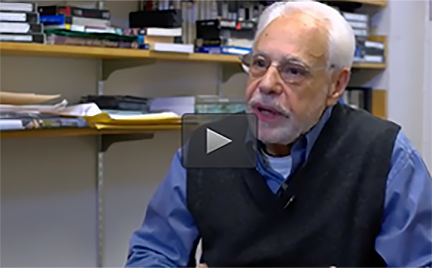This Course at MIT pages are part of the OCW Educator initiative, which seeks to enhance the value of OCW for educators.
Course Overview
This page focuses on the course 21L.011 The Film Experience as it was taught by Professor David Thorburn in Fall 2013.
This course concentrates on close analysis and criticism of a wide range of films, from the early silent period, classic Hollywood genres including musicals, thrillers and westerns, and European and Japanese art cinema. It explores the work of Griffith, Chaplin, Keaton, Capra, Hawks, Hitchcock, Altman, Renoir, DeSica, and Kurosawa. Through comparative reading of films from different eras and countries, students develop the skills to turn their in-depth analyses into interpretations and explore theoretical issues related to spectatorship.
Course Outcomes
Course Goals for Students
- Understand the historical and cultural significance of movies
- Explore classic films as works of art and as anthropological and historical artifacts that articulate the values and assumptions of particular societies and eras
- Augment one’s analytical, writing, and oral expression skills
Curriculum Information
Prerequisites
None
Requirements Satisfied
- CI-H
 subject requirement
subject requirement - GIR

Offered
Every fall and spring semester
In the following videos, Professor David Thorburn describes various aspects of how teaches 21L.011 The Film Experience.
- Meet the Educator
- Why Study Film?
- Approach to Lecturing
- The Film Experience: A Course in Transition
- The Video Lecture Conundrum
- Beyond Film: Television & Literature
- Thematic Spines of the Course
Assessment
The students' grades were based on the following activities:
 40% Tests
40% Tests 50% Essays
50% Essays 10% Oral expression
10% Oral expressionStudent Information

Breakdown by Year
Undergraduates
Breakdown by Major
Variety of majors
During an average week, students were expected to spend 12 hours on the course, roughly divided as follows:
Lecture
- Met 2 times per day (afternoon and evening) 1 day a week for 1 hour per session; 13 sessions total.
- Eight video lectures were assigned. During weeks in which the video lectures were assigned, there were no evening lectures.
Recitation
- Met 1 day a week for 1 hour per session; 13 sessions total.
- A central goal of the recitation hour was to strengthen students’ powers of oral expression. Students were expected to participate actively in discussion and were required to give a short presentation.
Film Screenings
Screenings of the required film(s) were held once a week in the evenings.
Out of Class
Semester Breakdown
| WEEK | M | T | W | Th | F |
|---|---|---|---|---|---|
| 1 |  |  |  |  |  |
| 2 |  |  |  |  |  |
| 3 |  |  |  |  |  |
| 4 |  |  |  |  |  |
| 5 |  |  |  |  |  |
| 6 |  |  |  |  |  |
| 7 |  |  |  |  |  |
| 8 |  |  |  |  |  |
| 9 |  |  |  |  |  |
| 10 |  |  |  |  |  |
| 11 |  |  |  |  |  |
| 12 |  |  |  |  |  |
| 13 |  |  |  |  |  |
| 14 |  |  |  |  |  |
| 15 |  |  |  |  |  |
| 16 |  |  |  |  |  |
 No classes throughout MIT
No classes throughout MIT Lecture session
Lecture session Recitation session
Recitation session Quiz
Quiz No class session scheduled
No class session scheduled Film screening
Film screening Paper due date
Paper due date Exam
Exam
